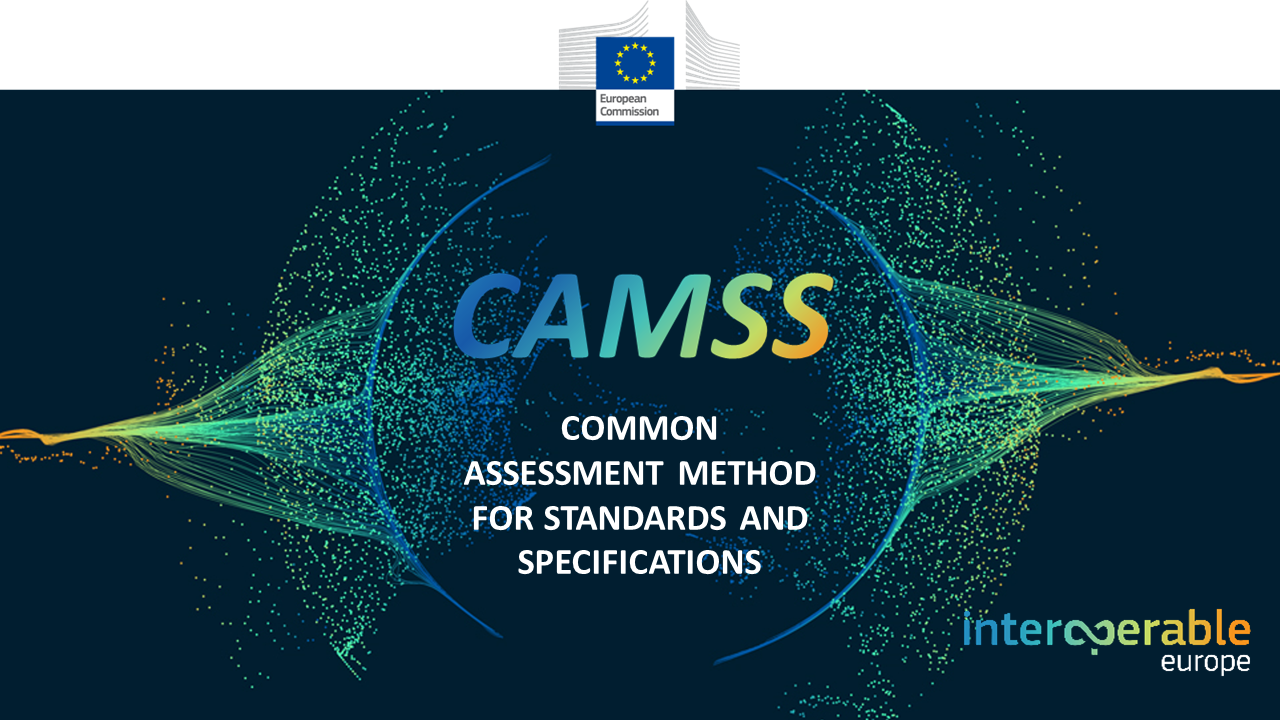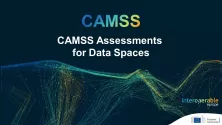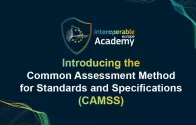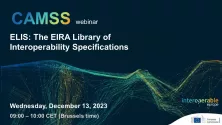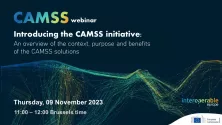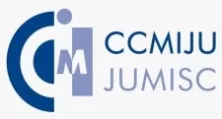Interoperability is the backbone that enables public administrations, businesses, and citizens to interact efficiently in a digital ecosystem. It ensures that services and data can be shared across various platforms, systems, and organizations without unnecessary barriers or misunderstandings.
The Common Assessment Method for Standards and Specifications (CAMSS) is a framework designed to assess and promote the use of open and widely supported standards and specifications. CAMSS can be an important tool for public administrations, guiding them in the selection and implementation of ICT solutions that are interoperable, secure, and aligned with relevant frameworks and regulations.

What is CAMSS?
CAMSS is the European guide for assessing and selecting standards and specifications for an eGovernment project, a reference when building an architecture and an enabler for justifying the choice of standards and specifications in terms of interoperability needs and requirements. It is fully aligned with the European Standardisation Regulation 1025/2012.
The main objective of CAMSS is achieving interoperability and avoiding vendor lock-in by establishing a neutral and unbiased method for the assessment of technical specifications and standards in the field of ICT. This method will be compliant with the Regulation 1025/2012 on European Standardisation.
While ICT solutions have specific characteristics at the political, legal, and organisational levels; semantic and technical interoperability are based mostly on technical specifications or standards. Within the context of the elaboration of their National Interoperability Frameworks, Member States organise the assessment of technical specifications or standards, in order to establish their national recommendations. Deciding on the recommended technical specifications or standards often calls for a resource-intensive and time-consuming assessment. In order to tackle this, the Digital Europe Programme (DEP) defines an action focused on the development of a common assessment method for standards and specifications (CAMSS).
The purpose of CAMSS is:
- to ensure that assessments of technical ICT specifications or standards and interoperability profiles are performed according to high and consistent standards;
- to ensure that assessments will contribute significantly to confidence in the interoperability of systems implementing these specifications and profiles;
- to enable the reuse, in whole or in part, of such assessments;
- to continuously improve the efficiency and effectiveness of the assessment process for ICT technical specifications, standards and interoperability profiles.
The assessment of standards and specifications for eGovernment solutions is currently organised on a national basis, e.g. within the context of Member States’ National Interoperability Frameworks. "CAMSS" is an initiative to promote collaboration between EU Member States in defining a "Common Assessment Method for Standards and Specifications" and to share with other countries the assessment study results for the development of eGovernment services.
In this way interoperability between EU Member States in the area of eGovernment will be expanded through the sharing of information and knowledge, the alignment of national processes and by reusing best practices. It will also speed up the assessment processes, reduce their cost throughout European public administrations and avoid ICT vendor specific lock-in.
The Multi-Stakeholder Platform (MSP), co-chaired by DG GROW and DG CONNECT, gave positive opinion on the adoption of CAMSS for the evaluation of standards to be identified by the MSP as suitable candidates to be recommended by the Commission for their use in procurement.
The growing need for a commonly agreed approach to the delivery of European public services in an interoperable manner led to the creation of the European Interoperability Framework (EIF). The EIF, with its guidelines and principles aimed at enhancing interoperability among public administrations in the EU, marked a significant milestone in achieving cross-border cooperation and standardization. The CAMSS Assessment EIF Scenario responds to this need for a standardized approach to the alignment and coordination of national interoperability frameworks across EU Member States. It ensures that the assessments and recommendations for standards and specifications are consistent and can be reused across borders, promoting a cohesive approach to eGovernment services by ensuring compliance with the European Interoperability Framework.
Building on the principles established by the European Interoperability Framework (EIF), the Interoperable Europe Act seeks to further enhance digital collaboration across the European Union. This legislation aims to create a more integrated and efficient digital single market by mandating the interoperability of digital public services. The Act promotes the adoption of common standards, facilitates the exchange of best practices, and supports joint initiatives among Member States. In this context, CAMSS serves as a valuable asset in meeting the requirements for the effective implementation of the Interoperable Europe Act. CAMSS aligns with the Act's emphasis on interoperability assessments and the promotion of standardized approaches, thereby supporting the overarching goals of enhanced cross-border digital cooperation and integration.
Additionally, The ICT Rolling Plan identifies the standardization activities necessary to achieve interoperability and guides the selection of relevant standards and specifications. Referencing the ICT Rolling Plan within CAMSS ensures that the selection of specifications for assessments and its inclusion in the ELIS, are aligned with broader EU standardization efforts.
The expected benefits of the CAMSS are:
- Ensuring greater transparency throughout the selection of standards in the context of ICT strategies, architectures and interoperability frameworks. This will be achieved through the establishment of a commonly agreed assessment method, assessment process and a list of assessment attributes.
- Reducing resource and time requirements and avoiding duplication of efforts. (Partial) sharing of finalised assessments of standards and specifications.
- Allowing easier and faster assessments, and reuse the ones already performed through the creation and maintenance of a library of standards.
The use of the CAMSS by Member States helps to promote transparency in the choice of eGovernment solutions and standards. It should also lead to a more efficient use of public funds via sharing and reuse among eGovernment projects. The entry into force of the Interoperable Europe Act has brought locates camss
Key milestones
Since its inception, CAMSS has been developing a set of solutions that provide standardised methodologies for assessing the interoperability of technical specifications and architecture principles within the European digital space. Its evolution can be visualised through the timeline illustration below, which highlights the key milestones that have marked CAMSS development.
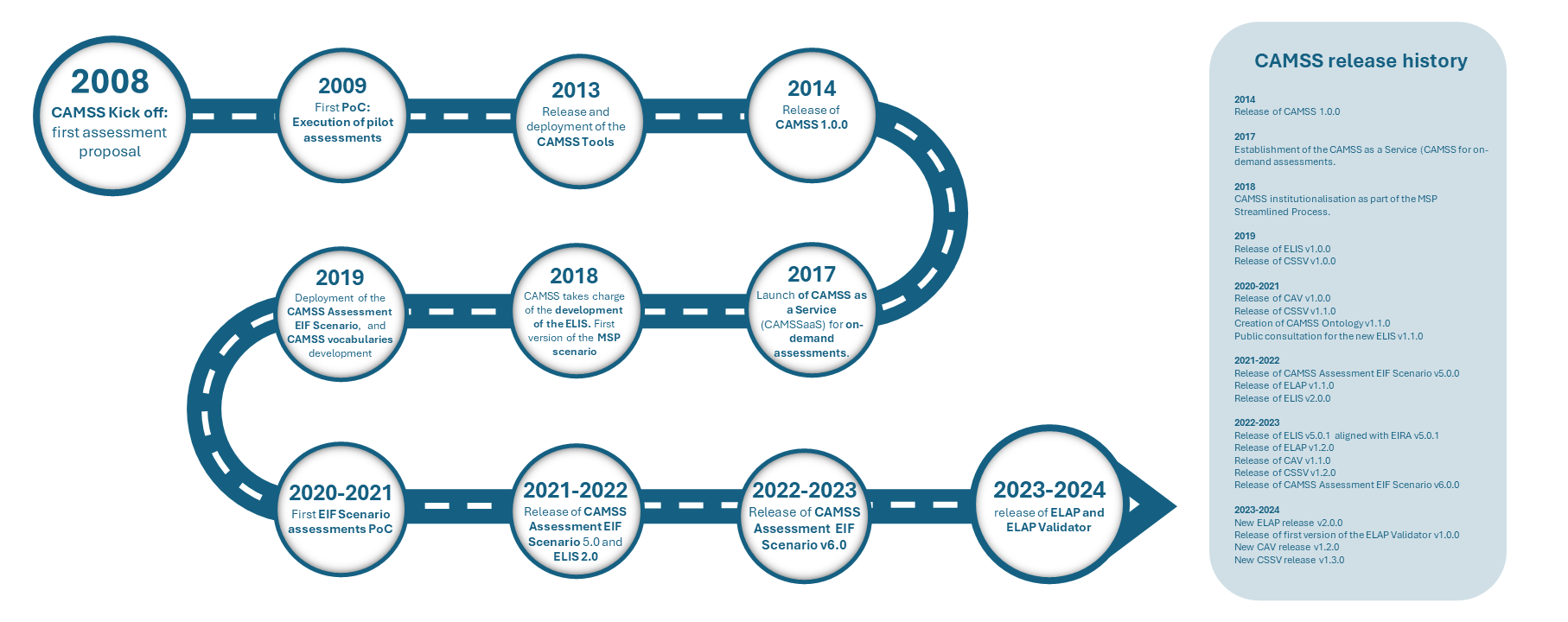
Find out more
CAMSS Value Proposition
A prime starting point for understanding the value of the Common Assessment Method for Standards and Specifications (CAMSS) is its unique value proposition.
The above explanatory video offers a concise overview of its benefits for project leaders and stakeholders, paving the way for a detailed exploration of its application scenarios and the support services provided by the CAMSS team. More information of the Value propositon and other related documents can be found in the Know more section.
CAMSS Info Package
The CAMSS info package is another interesing source of information, where the user will get a glimpse of the CAMSS Context and main purposes of the CAMSS Solutions.
Furthermore, Comprehensive documentation for CAMSS is readily available online via the CAMSS Solutions page, where you will find all information regarding the use cases and other helpful resources.
CAMSS webinars
Moreover, an engaging introduction to CAMSS is accessible through a webinar recording linked here. This webinar, conducted on November 9th, 2023 (further details available here), delves into the whole CAMSS environment and helps to understand CAMSS role as an interoperability enabler.
If you want to delve deeper into some of the main CAMSS solutions from the hands of its developers, you can head to the CAMSS webinar page, where you will find all presentations conducted to date.
Stay updated
To follow the CAMSS latest news, releases and events, use the approach that suits you best:
- Via Joinup: Join the CAMSS collection and solutions community in Joinup and edit your account's subscription settings to receive notifications.
- Via social media: Follow the Interoperable Europe initiative on X and LinkedIn for news on CAMSS and other interoperability solutions.
Get in touch
If you have questions, feedback or are considering using some of the CAMSS solutions, you are invited to send an email to the CAMSS team at DIGIT-CAMSS@ec.europa.eu
We are continuously looking for feedback to improve CAMSS and the services we offer to the community. If you have a few minutes to spare we would highly appreciate it if you took the time to complete our feedback survey. Your opinion matters!


